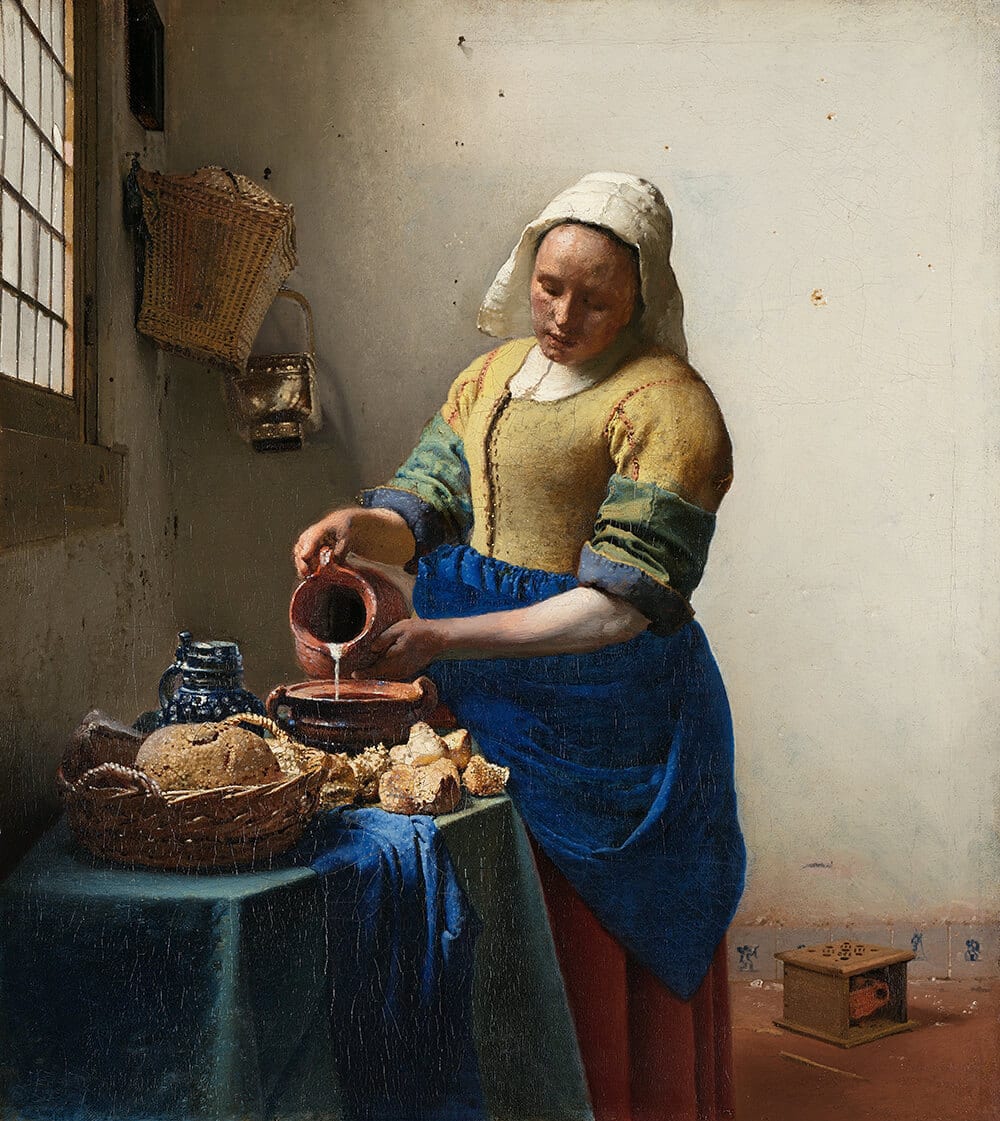 Even before I knew that my father walked the same streets in Delft as a child that Jan Vermeer had, or that my ancestors arrived in Delft around the time of Vermeer, I was captivated by his paintings. In particular “The Milkmaid” acted as an inspiration for the logo I created for our business.
Even before I knew that my father walked the same streets in Delft as a child that Jan Vermeer had, or that my ancestors arrived in Delft around the time of Vermeer, I was captivated by his paintings. In particular “The Milkmaid” acted as an inspiration for the logo I created for our business.
There has been much discussion and research into the question of how much technology Vermeer used in the creation of his paintings. Scrupulously perfect in perspective, meticulous in detail, rich in colour and tones, Vermeer’s works set a standard that few artists can achieve. Therefore, the issue of whether he “cheated” to achieve his results is more than an esoteric question. It relates to almost every artist’s personal sense of ability. The issue also pivots around the fundamental question of what is art. People will ask me how I render a picture onto a canvas or paper: Do I use a projection device? Do I use a grid? I have been chagrined to discover that for many people any use of technology diminishes a piece of artwork in their minds. The composition, interpretation and translation of line and colour are disregarded if any use of technology is admitted to. For some even the use of a ruler or square offends their sense of artistic purity.
 So back to Vermeer; I just finished watching the fascinating although rather geeky movie, Tim’s Vermeer. If indeed Vermeer did use a camera obscura or lenses and mirrors to render his paintings, does that diminish his craft and ability? Should those of us whose Dutch pride has been stirred by his paintings, slink off in shame because his painting are not what they seem? I would argue the contrary. We live in an era of great dependence on technology. Unlike Vermeer, I do not grind my own pigments and mix my paints. I go to Michaels. I don’t stretch my own canvases, although I would like to learn how. I go to Michaels. I am not limited to working in natural light. I can find images from all over the world with my finger on a touchpad and thereby benefit from the compositional eye of photographers I will never meet. I blow up those images on my scanner or reduce them to pixels to analyze the underlying colours. Baring an artificial restriction to primitive materials, it is impossible to separate art and technology today. In fact, technology has become our new paint brushes.
So back to Vermeer; I just finished watching the fascinating although rather geeky movie, Tim’s Vermeer. If indeed Vermeer did use a camera obscura or lenses and mirrors to render his paintings, does that diminish his craft and ability? Should those of us whose Dutch pride has been stirred by his paintings, slink off in shame because his painting are not what they seem? I would argue the contrary. We live in an era of great dependence on technology. Unlike Vermeer, I do not grind my own pigments and mix my paints. I go to Michaels. I don’t stretch my own canvases, although I would like to learn how. I go to Michaels. I am not limited to working in natural light. I can find images from all over the world with my finger on a touchpad and thereby benefit from the compositional eye of photographers I will never meet. I blow up those images on my scanner or reduce them to pixels to analyze the underlying colours. Baring an artificial restriction to primitive materials, it is impossible to separate art and technology today. In fact, technology has become our new paint brushes.
Vermeer painted in a golden age of discovery. There was no dividing line between science and art. As he ground his pigments and mixed his paints, he acted as chemist as much as an artist. If he used lenses and mirrors, as he probably did given the details in some of his paintings that would have been difficult to see with the naked eye, he wasn’t taking shortcuts. Anyone who has knowledge of Vermeer knows how slowly he painted. Rather he was experimenting with how to better convey an image on a canvas. Vermeer predated the Impressionists and Pointelists. He knew nothing of pixels. He knew nothing of photographs. Lifelike images were an unknown standard. Yet he understood that the artist’s application of dots and lines fools the viewer’s eye to see lifelike images with light bouncing off the subjects. He upped the standard of what could be achieved by the application of paint on a canvas.
So proud of Vermeer? We should be! Not just those of us whose families hail from Delft, not just people of Dutch descent; not just Europeans. No, as fellow human beings in the pursuit of beauty, we can relate to Vermeer and be amazed at the human need to not only discover continents but to explore the smallest details of creation. We can marvel in the complexity of creation and that it takes all of humanity, including scientists and artists, to begin to fathom its beauty and communicate that to our fellow travelers.

0 Comments